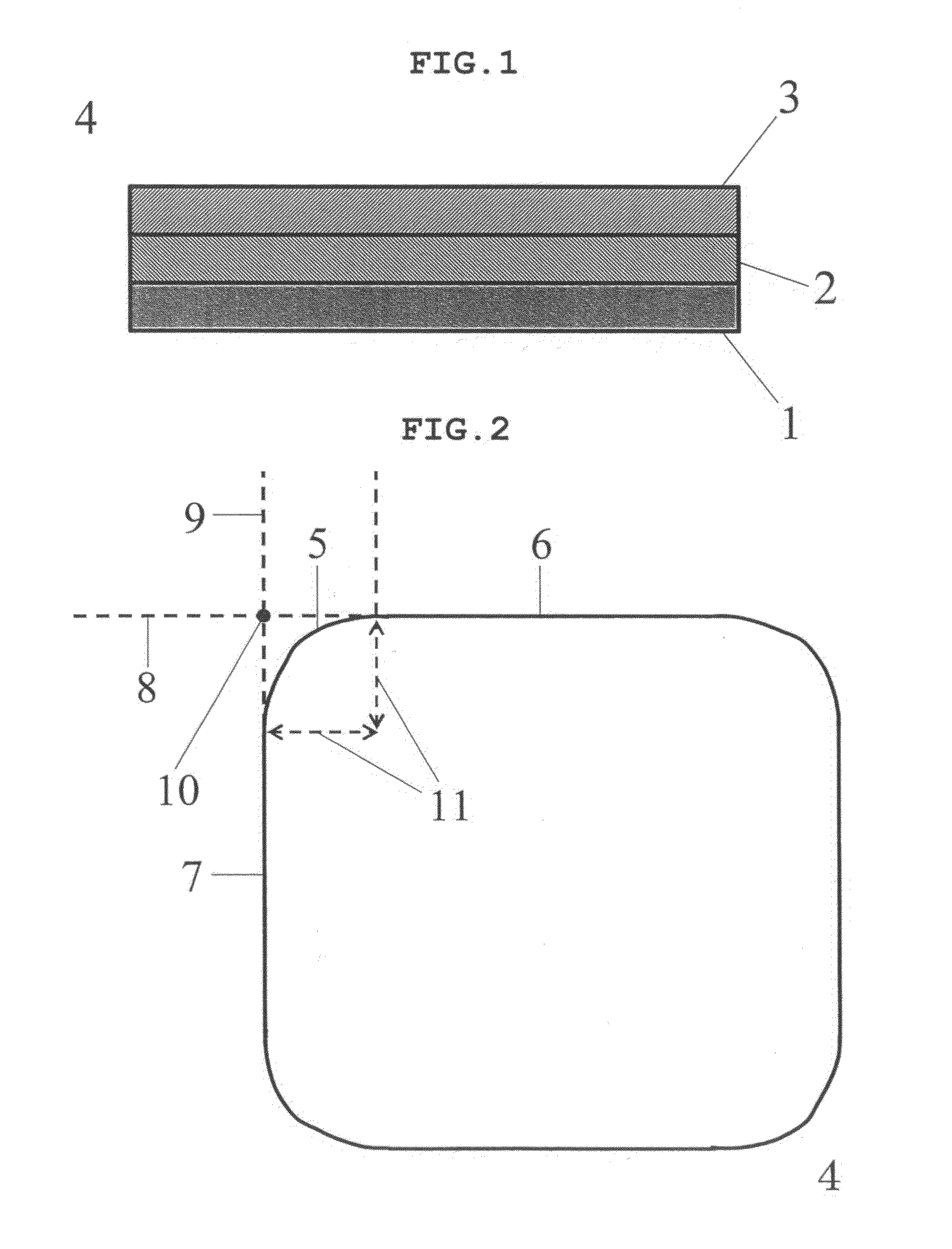Patch and patch preparation
a patch and patch technology, applied in the field of patch and patch preparation, can solve the problems of patch being easily detached from the skin, patch being markedly weakened, high stretchability, etc., and achieves the effects of easy adhesion to the skin, low stretchability, and patch stretchability
- Summary
- Abstract
- Description
- Claims
- Application Information
AI Technical Summary
Benefits of technology
Problems solved by technology
Method used
Image
Examples
example 1
[0058]An acrylic adhesive solution in an amount to set an adhesive solid content to 44 parts and isopropyl myristate (54 parts) were stirred in a container to give a uniform mixture. To this mixture was added ethylacetoacetate aluminum diisopropylate in the proportion of 0.4 part per 100 parts of the solid content of the acrylic adhesive solution, the viscosity was adjusted with ethyl acetate, the liquid was laminated on a PET film (75 μm-thick) as a release liner such that the thickness of the adhesive layer after drying was 200 μm, adhered to a non-woven fabric side of a support ((total) thickness 54 μm) consisting of 2 μm-thick polyethylene terephthalate (hereinafter to be indicated as “PET”) film / PET non-woven fabric (fabric weight 12 g / m2), and aged (crosslinking treatment of adhesive layer) at 70° C. for 48 hr. The laminated sheet after aging was cut such that, when adjacent two straight-line sections of the curved sections of the planar outer shape are extended and the point ...
example 2
[0059]A patch was obtained in the same manner as in Example 1 except that the laminated sheet after aging was cut such that the corner was a circular arc with radius of 1.0 mm.
example 3
[0060]A patch was obtained in the same manner as in Example 1 except that the laminated sheet after aging was cut into length and width 63.5 mm (corner was a circular arc with radius 5 mm).
PUM
| Property | Measurement | Unit |
|---|---|---|
| radius | aaaaa | aaaaa |
| thick | aaaaa | aaaaa |
| radius | aaaaa | aaaaa |
Abstract
Description
Claims
Application Information
 Login to View More
Login to View More - R&D
- Intellectual Property
- Life Sciences
- Materials
- Tech Scout
- Unparalleled Data Quality
- Higher Quality Content
- 60% Fewer Hallucinations
Browse by: Latest US Patents, China's latest patents, Technical Efficacy Thesaurus, Application Domain, Technology Topic, Popular Technical Reports.
© 2025 PatSnap. All rights reserved.Legal|Privacy policy|Modern Slavery Act Transparency Statement|Sitemap|About US| Contact US: help@patsnap.com



